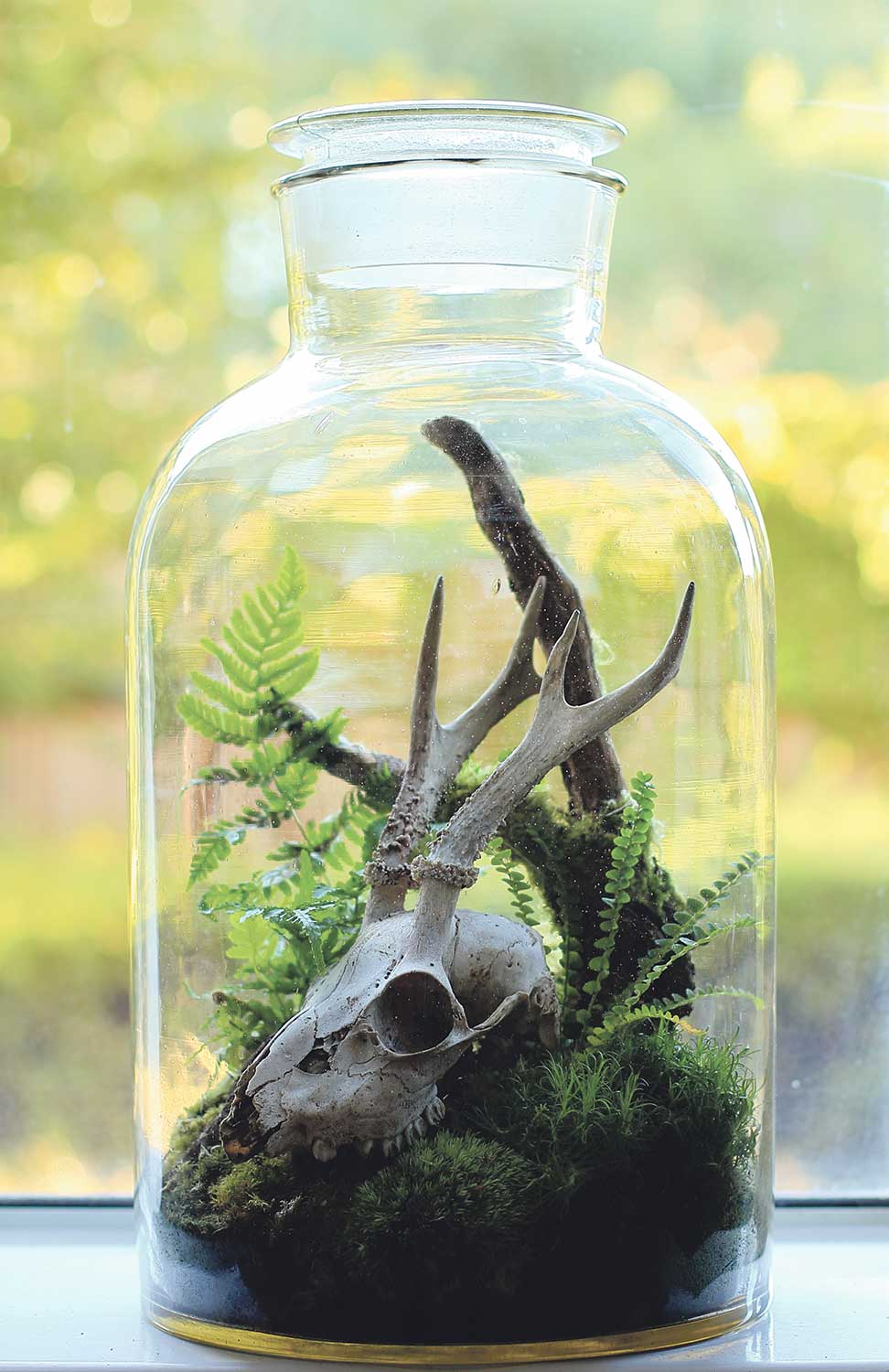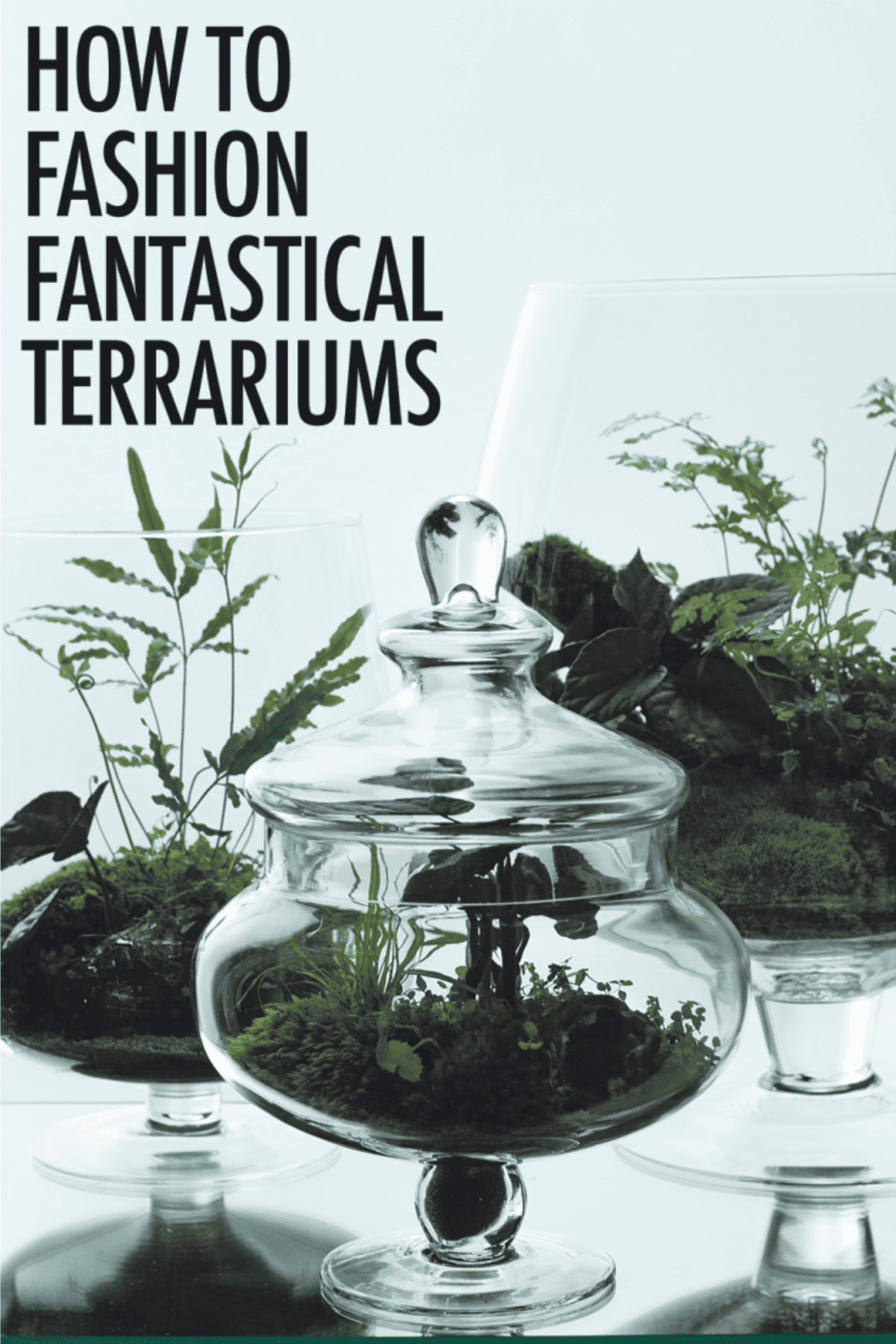Ken Marten is a Londoner who has been working in diverse creative pursuits since he was a child in the industrial town of Port Talbot, Wales. In 2012, after a decade of working in high fashion floristry for clients such as Mulberry, Christian Louboutin, and the Connaught Hotel, Ken created Hermetica, where he now focuses on living, breathing plants and translating his creative vision into indoor gardens that challenge our ideas of what interior planting can be.
His intriguingly artistic terrariums feature found objects, and they recall the Victorian plant collector origins of terrarium making. Miniature ecosystems contained within glass tables were once used to transport and study specimens. Like the Victorians, Ken frequently adds unique items such as skulls, chunks of crystal, fossils, or other ancient or natural treasures to the mix. These materials hint at the passion and inquisitiveness of the collector that he is.

As I slip into the dark of winter, I crave projects like terrarium making. In particular, I love the idea of making them as dark and moody as the days outside. I asked Ken to share some of his tips for making the most interesting and successful terrariums.

“My challenge is to encapsulate the ephemeral, like a genie in a bottle. I seek to capture a frozen moment and suggest a timeless otherworld tantalizingly held behind glass.”
-Ken Marten
Ken Marten – A Terrarium Artist’s Construction Advice:
- Use a minimum amount of soil. Start by placing plants in a base of gravel and then fill with small amounts of soil and moss. This solves two common terrarium problems—slow the growth of plants by providing less-than-perfect growing conditions and controlling moisture and subsequent mold.
- Ken’s favorite tools include long-handled wooden spoons and a litter picker (long handle with clamp on one end). The handle of the spoon can be used to move materials around, and two of them can operate like chopsticks. The litter picker is particularly useful for large terrariums where the neck of the bottle is long.
- Wash soil from roots (particularly ferns) so that you can push plants through the opening of the terrarium without dirt smearing down the sides. Use tissue wrapped around the backside of a wooden spoon to clean the insides of a terrarium.
- Prune plants hard for shape—much the same as you might a bonsai. (Don’t be afraid to cut a lot of foliage!)
- Ken’s favorite terrarium plant is Geranium robertanium (Herb Robert) which grows as a weed locally (so it is free!). It has a beautiful sculptural and open habit that lets lots of light through. Look for native plants, weeds, and anything interesting for size, texture, and shape where you live to find new inspiration for your terrarium.
More Gardens under glass Posts from PITH + VIGOR:
images: ken marten – Follow him on instagram to see his upcoming projects.
+comments+